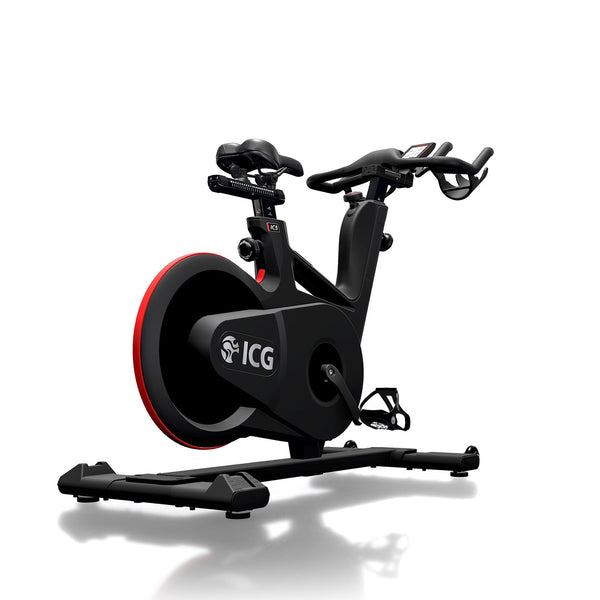Nationwide Sales & Service - 01536 802333
Nationwide Sales & Service - 01536 802333
9 A.M - 8 P.M
March 01, 2024 4 min read
When it comes to cadence, opinions can differ greatly. What may be considered a very high cadence to some, may only be seen as moderate to others. Regardless of your personal definition, it is crucial to include high cadence drills in your training routine, can be done out side or on your indoor cycle as long its shows RPM. The Life Fitness IC Bikes with there easy to read displays and smooth resistance changes work really well.
Varying cadences greatly impact our physiological and muscular efforts. This can be seen when comparing pedaling at 200 watts and 40 rpm to pedaling at 100 or 120 rpm. The lower cadence results in a higher muscular strain, while the higher cadence increases cardiovascular response. This is due to the difference in muscular and physiological strain produced by different cadences. While lower cadences increase muscular strain, higher cadences lead to higher heart rate, breathing rate, and respiration rate.
Studies have been conducted to demonstrate and illustrate different cadences that may result in an "optimal cadence." However, these studies may not always reflect real-world scenarios. For instance, one study found that a low cadence (40-60 rpm) was optimal due to its lower oxygen usage. While it is true that this cadence range uses less oxygen (due to increased reliance on muscles rather than the cardiovascular system), it does not necessarily mean that this is the most effective way to ride a bike.
The highest VO2 or MAP power is typically not achieved at 40-60 rpm, which is an atypical range. In most cases, this power output is sustained at a much higher cadence, such as those seen in the hour record where cadences higher than 100 rpm are achieved. Only a few cycling records have been set at an rpm less than 100.
The objective here is not to suggest that all cyclists should strive to maintain a cadence of 100 rpm or higher. In reality, this is not a realistic goal for most people. Achieving such a high cadence not only requires great cardiovascular endurance, but also a strong neuromuscular coordination to sustain it. The key to improving is consistent practice, repetition, and more practice.

As novice cyclists often find themselves settling into a comfortable cadence of 50-60 rpm, experienced riders have the ability to pedal at higher rpms due to improved coordination and efficiency. This is achieved by fine-tuning the motor skill of pedaling in a perfect circle, rather than "pedaling in squares", which is a metaphor for fatigued mechanics and decreased efficiency. Strive for smooth and efficient movements to avoid working against yourself.
Incorporating a high cadence into your training can improve your comfort level while riding. This can be especially beneficial for events where muscle fatigue plays a major role. Otherwise, if you were to maintain a cadence of 60 rpm throughout the event, your legs will become exhausted and fatigue levels will significantly increase. This is because higher cadence work relies more on carbohydrate fueling rather than fat burning, which is not ideal for longer events.
During high cadence training, you may notice that your average rate of pedaling increases from 70-75 rpm to 80 rpm, becoming your new "norm." However, those who already ride at 80-85 rpm may not experience a change in their normal cadence. Incorporating high cadence drills into your training is not necessarily aimed at reaching a higher number, but rather increasing your efficiency. By improving your efficiency, you can reduce the strain on your body and improve the coordination and contraction of your muscles. This leads to decreased muscular and cardiovascular effort at a given rpm. Ultimately, increased efficiency results in less energy output for a given intensity.
1 ) Cadence Builds
Try incorporating 20-30 second cadence builds into your training regimen, focusing on reaching your peak rpm. These builds are best performed with low resistance (around 50-60% of your FTP) and starting at your normal cadence, increasing it every 1-2 seconds until you can no longer do so. You may initially reach a maximum of 100-110 rpm, but with repeated efforts, you can potentially increase that to 120. This means your neuromuscular coordination is improving, so remember to engage your core and focus on pedaling smoothly.
2) Sustained Cadence Holds
A sustained cadence hold requires focusing on maintaining a specific cadence for a set amount of time. This training technique involves completing intervals, such as a 6x60 second high cadence hold, where you maintain a cadence of 130 RPM at or slightly below your threshold power. These intervals should be followed by rest periods, as repeatedly holding a high cadence at threshold power can be challenging.